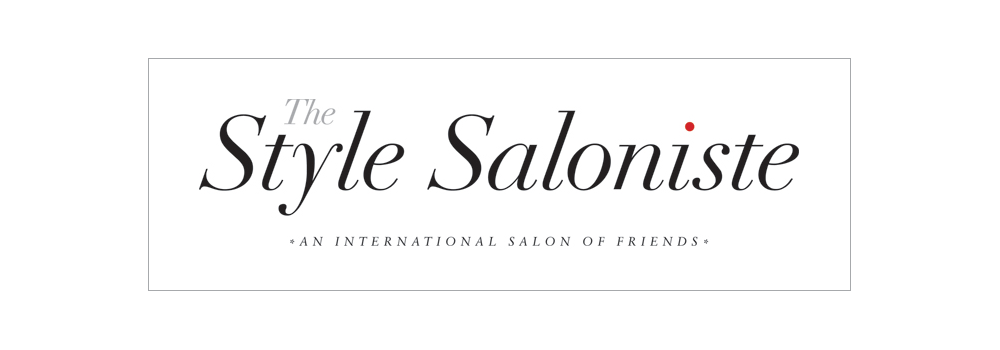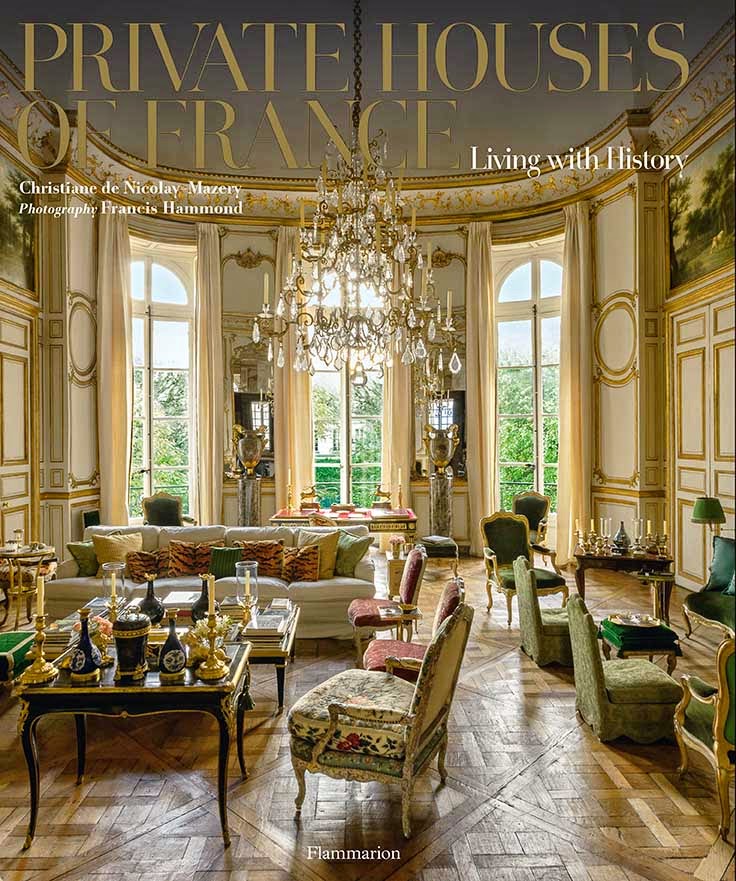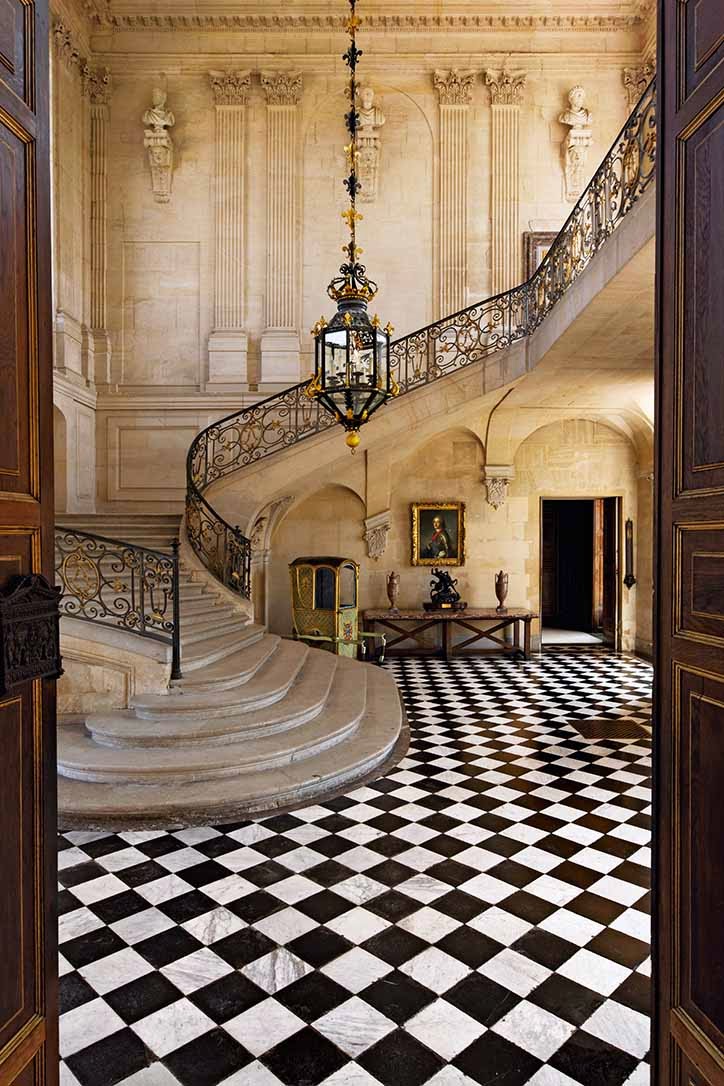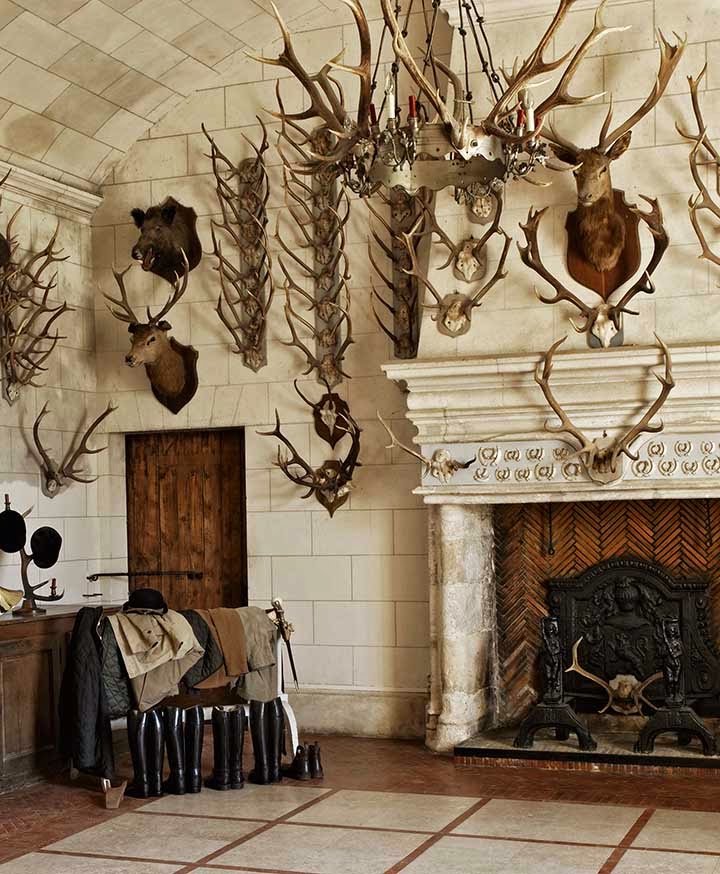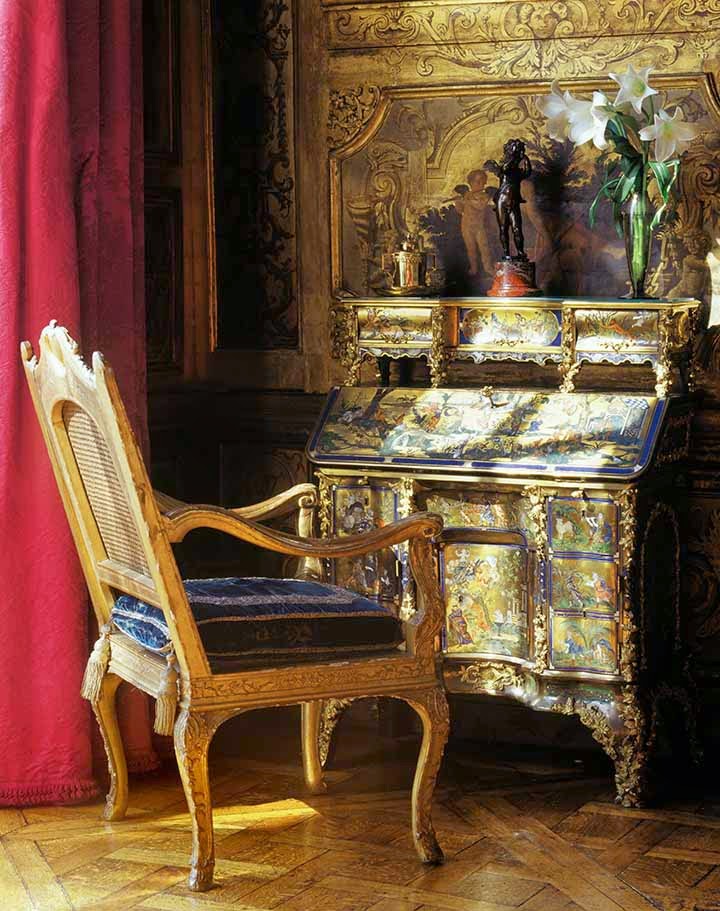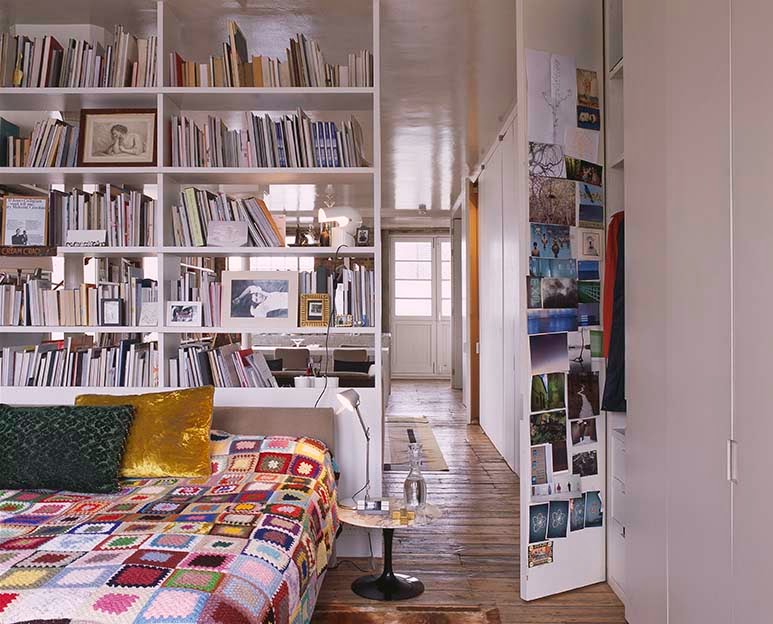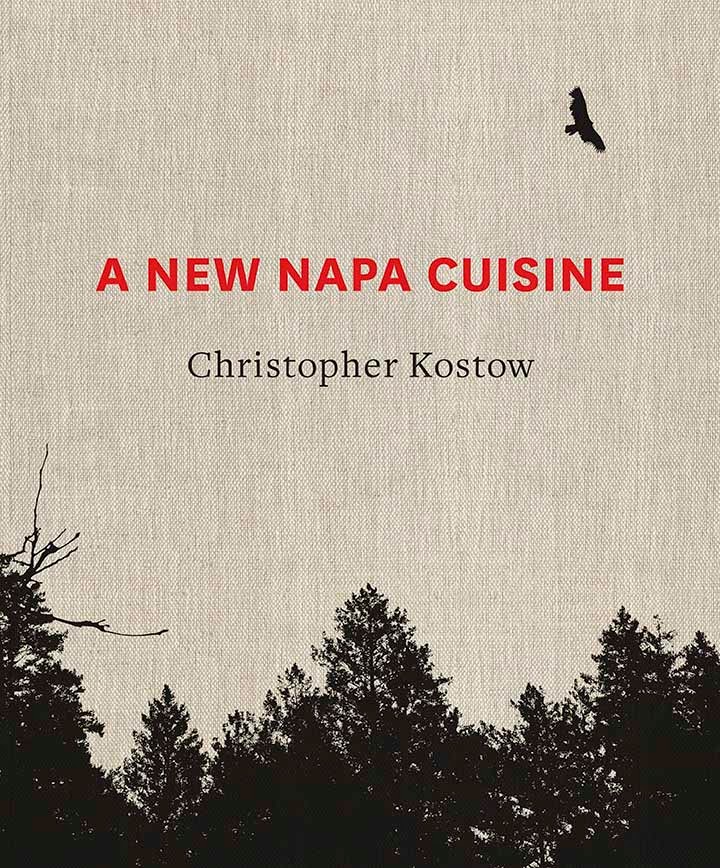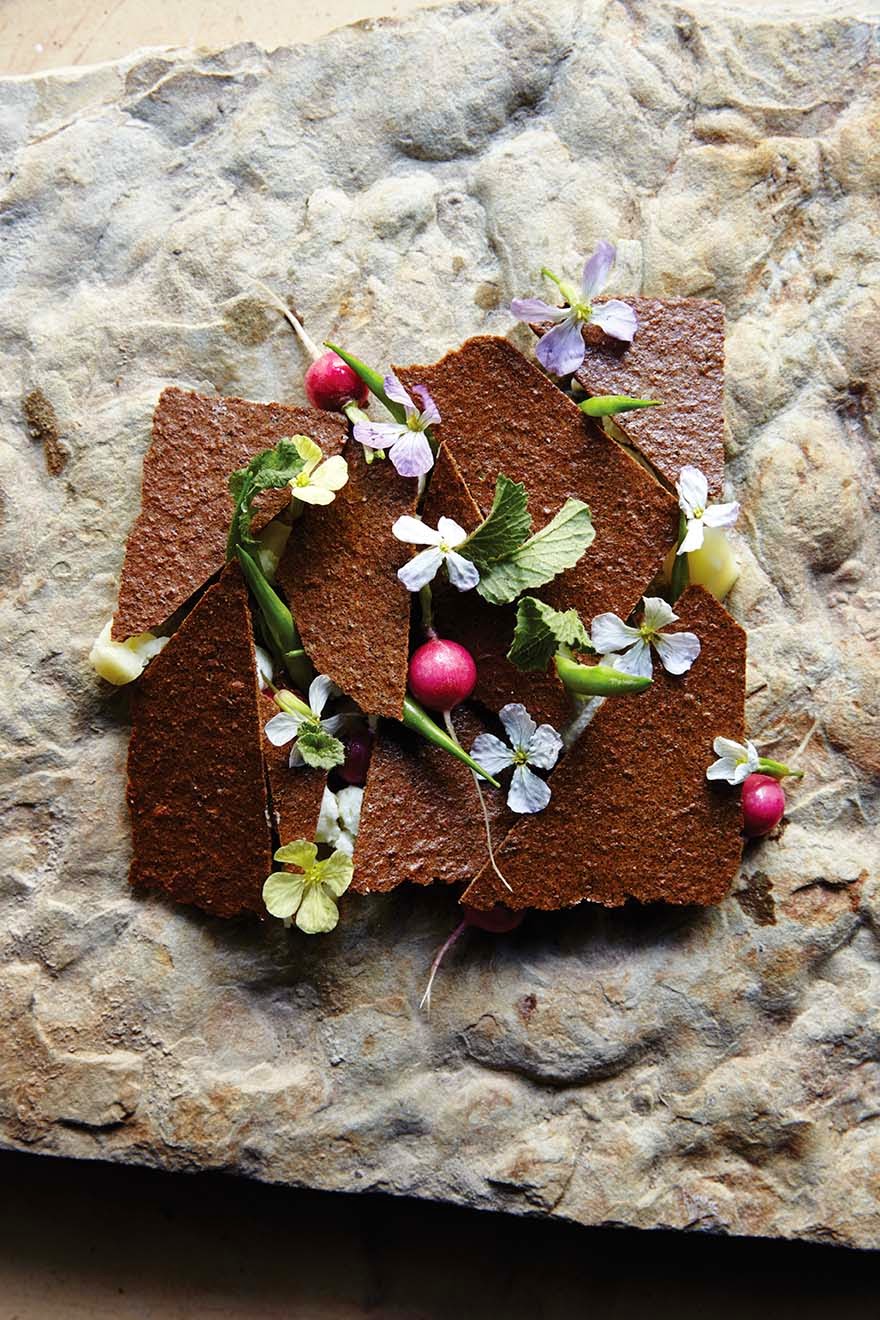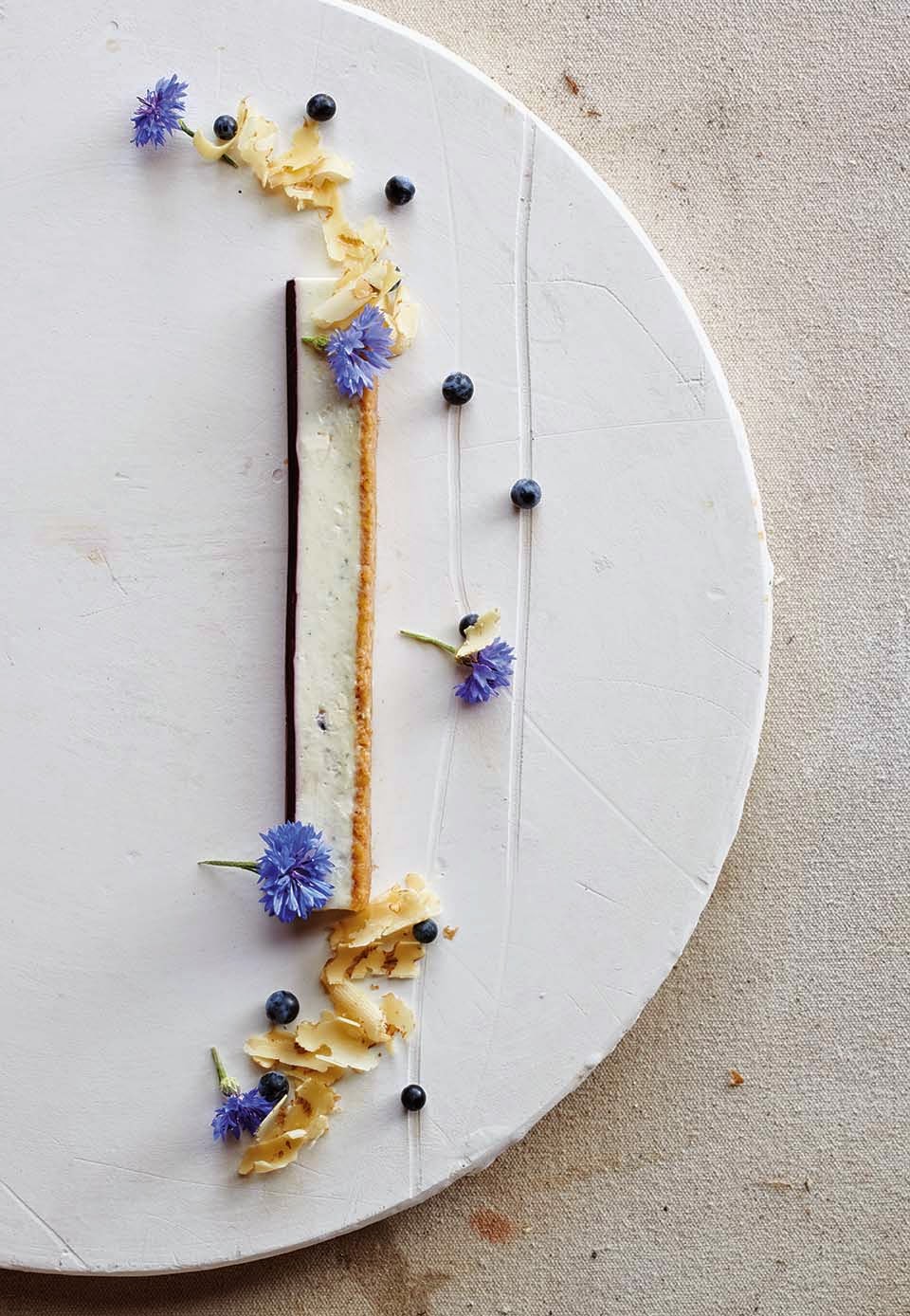Come with me this week to discover the best new books on interiors, architecture, design, cuisine, fine photography, and essential topics for building a fine library.
These are my selections—based on an objective review of the depth of the contents, the authority of the writer, an array of ideas and concepts and a beautiful book.
I always take a close look at the ‘book-ness’ of each volume—to check the design of the binding and endpapers, the printing, and the rich information imparted in captions and text. I want to be transported. Check, check and check.
Last week, I presented Part One of my favorite style books for fall. That list (you can scroll down to read it) included “Loulou de la Falaise’ and “Snowdon’ (Brit photographer Tony Armstrong Jones' profile and album), as well as ‘Haute Couture Ateliers (a must for fashion designers and fashion students), and finally ‘The Best of Flair’ a handsome boxed compendium of every page of the great fifties style magazine, Flair).
When I acquire books, I’m looking for books for a lifetime of pleasure, information, inspiration, ideas and reference. I want to discover great writing. I want beautiful and intelligent photography. I want exceptional pages—put together with intelligence for lasting pleasure.
For book connoisseurs—and for those who like me collect books on a wide array of topics—these books will all give you great pleasure.
Private Houses of France: Living with History, by Christiane de Nicolai-Mazery, photographed by Francis Hammond (Flammarion).
Twelve aristocratic French families open their private Paris residences, as well as their family chateaus and country retreats for a private visit.
De Nicolai-Mazery has produced other fine books on French historic interiors—she is a longtime friend with many of the owners—and she favors showing a rather up-close, family side of these handsome residences.
There are autumnal hunts in ancient French forests, and detail shots of tables set for celebratory dinners and intime lunches. The book's photographs even seem to capture the weather and seasons in France--shooting on foggy mornings as well as bright summer afternoons. She shows embroidered uniforms, art collections, rare books, porcelains, dressing table accouterments, and candlelit suppers, gardens, wallpapers, and historic painted walls.
It’s a rich feast, delicious, and all captured in lavish, poetic photography.
Hubert de Givenchy’s Paris mansion is on the cover, divine, and I love Chateau d’Anet, and Champchevrier.
Very poignant is the final section, a series of images of the Hotel Lambert, the late great and lamented Baron de Rédé’s former residence on the Ile St.-Louis. On these pages it is resplendent and lavish. But when I recently walked over to view it, the building was a scaffold-bedecked building site, the victim of an electrical fire. Beauty can be fleeting…but it lasts forever on the pages of this book.
It’s all very personal and filled with fresh flowers, books, a sense of lives well lived.
It’s also uplifting and full of discoveries. Highly recommended.
Marella Agnelli: The Last Swan by Marella Agnelli and Marella Caracciolo Chia (Rizzoli New York).
Peel off the handsome paper dustjacket to reveal the gleaming crimson silk and gold embossed binding of this glorious book—and it is clear this is a lavish production and an intelligent and superbly produced and edited one.
This is, however, a very personal book full of private houses, private apartments, gardens, family life, family snapshots, and some of the prettiest wedding photography.
The Agnelli family (Gianni Agnelli was the Fiat industrialist and Marella was a Florentine princess) are shown here sunbathing and frolicking, at costume balls, sailing with the Kennedys, cruising the Turkish coast with Truman Capote (the viper in their midst), as well as wearing fashions of the day, couture of course.
Of course, Richard Avedon photographed Agnelli endlessly in the fifties and sixties, and she graced magazines as one of the most beautiful and haunting women of the twentieth (and 21st) century.
With interiors in over many decades—in Turin, in Milan, in Rome, in Saint Moritz, in Manhattan, and in Corsica and Marrakech, this is a heady delight.
The key is that it was produced and edited by Marella Agnelli herself, along with her adoring niece. It is their third collaboration. I hope there is a fourth.
Among photographers represented here are Horst, Irving Penn, Avedon, Henry Clarke, and Robert Doisneau. Beautiful.
A Frame for Life by Ilse Crawford. The Designs of Studioilse (Rizzoli New York).
Ilse Crawford has produced a fascinating, personal and rather contrarian book—that is rich in rewards, challenges, ideas, beliefs and concepts, and her recent work.
This is a designer and writer who owes an enormous debt to architect Christopher Alexander, the great author of ‘A Pattern Language’ and other influential books that put forth the highly influential concept that houses should support and inspire and provide comfort for the lives lived in them. It was Christopher (I’ve interviewed him several times) whose profound and illuminating ideas about residential architecture first brought ideas like making interiors a framework for lives lived within them. He spoke of ‘a comfortable chair’, ‘a place to read’, light on all sides, a ‘nook by the fire’, and creating a humanistic place for dwelling, a place for the soul.
Ilse has clearly read Professor Alexander’s books cover to cover. That’s great. And so her book is infused with comment such as “I have developed an agenda of working to create design that is frame for life; a design that stars with human experience, that prioritizes our wellbeing and enhances our humanity.” (Sound familiar?).
But closer reading of the book offers up ideas about how to create ‘design with the human being in the center’. It’s uplifting and inspiring—and the book shows examples of her international work, for offices, hotels, residences and ateliers.
Yes, it can be off-putting at times In the introduction Ilse says, “I consider myself a quiet revolutionary’. And she is a person without a trace of irony, placing herself, hair neatly combed, wearing red lipstick and reading a red book, in bed with her husband on the cover of her book). But…even so…the book has poetic, quirky, quiet, and compelling moments and should be in the library of a design firms for its point of view. And through here, readers will be re-introduced to Christopher Alexander’s concepts, simplified here. A terrific reference, a cause for vivid discussion and colloquium.
A New Napa Cuisine by Christopher Kostow (Ten Speed Press/ Penguin Random House).
This is the debut cookbook of a chef whose work I’ve admired ever since he took up residence at The Restaurant at Meadowood, my favorite hotel/resort in the Napa Valley. Christopher, notably, is one of the few chefs/restaurants in California with three Michelin stars and awards for days.
I’ve interviewed Christopher, and I’ve walked among the rows of herbs and baby carrots and radishes and flowers that he was handpicking for the evening’s menu. He’s thoughtful and focused and he speaks of a special terroir.
I was intrigued by the book the moment I picked it up. The cover is rough linen (it almost looks as if Christopher wove it himself) and it’s screen printed with silhouettes of the ancient redwoods and pines that give Meadowood its magical setting and fragrance.
Photography by Taylor Peden and Jen Munkvold are exquisitely rustic and simple, with inspired styling. Many dishes are served on pottery crafted by a friend in Pope Valley.
The book is great because Christopher presents his own Napa Valley—far from the shimmery and glitz wineries and far from the trappings of Highway 29.
The recipes: look for wonderful ideas like Okra Flower Oyster in which he fills fresh okra flowers with a slice of oyster, for a canapé. Potatoes cooked in fresh beeswax read wonderfully (complicated and fascinating). There’s Coal-roasted sturgeon with fermented quince, and favorites from the root cellar, along with Black shallot beef chanterelle dish and Silverado strawberry tableau.
Can these be made at home? If you’re clever and patient the recipes will be rewarding, especially if you improvise.
This is a cookbook to read, as his life unfurls and grows in the Napa Valley, and a brilliant young chef finds his voice and his life among artisans, craftspeople, growers, friends, winemakers, and philosophers and poets. Thrilling.
Cecil Beaton: Portraits & Profiles Edited by Hugo Vickers (Frances Lincoln) is a very worthy addition to a library with many other Beaton books.
Cecil Beaton, photographer, diarist, stage and costume designer, social butterfly, is one of those essential figures (like Jean Cocteau) who seems to have known everyone, appeared at every grand costume ball, published in every style magazine, and inhabited stylish houses and…created memorable and important and influential art.
I’m a great fan of Cecil because he was a very polished photographer and fantastic art director (images pretty rather than deep)…and he recorded every decade of his life with avid attention. Girls in gowns, yes. Film stars like Marilyn Monroe and Audrey Hepburn…yes, they are on these pages, too.
The book is superbly presented so that readers view his portraits—and read profiles on Pablo Picasso, Georgia O’Keefe, Andy Warhol, Queen Elizabeth (both of them), and the war years, artists, writers, and society. Essential reference, Vickers also adds his own waspish commentary.
Time and Tide: Photographs from Praia Piquina by Christian Chaize (Chronicle Books).
On these pages readers will experience pure escape. Uplift, instant. It reminds us that happiness is a simple matter of a lovely beach, colorful beach umbrellas and dreamy blue horizons, the smell of the sea, some friends, and sunshine. This beautiful oversized book offers a breath of fresh air and evokes fantasies of Mediterranean travel. Photographer Christian Chaize returned many times over the course of eight years to shoot an intimate little rock-framed beach in the south of Portugal from the same vantage point.
Vintage Industrial: Living with Machine Age Design by Misha de Potestad and Patrice Pascal (Rizzoli New York).
This is an essential reference for those who want to learn about Jean Prouvé, and about the seating, tables, storage, lighting, curiosities, and the lively French period from 1900 to 1950, the floushing of a raw, functional machine age aesthetic.
Picasso’s Masterpieces: The Musée Picasso Paris Collection (Flammarion).
The Picasso Museum in Paris recently re-opened and I can’t wait to return to see favorite paintings and drawings.
In this reference book are 450 masterpieces, all arranged chronologically and by theme. It’s a magisterial volume, presented in a slipcase.
Sissinghurst: Vita Sackville-West and the Creation of a Garden by Sarah Raven (St. Martin’s Press).
If you’ve ever traipsed down to Sissinghurst from London and wandered among the beauty of this garden (and tower) you must add this book to your library.
Sarah Raven is a noted English gardener who is married to Vita’s grandson, Adam Nicholson, and she currently resides in one of the historic buildings on the grounds.
Best of all, there are details of the gardens, plant lists, fuzzy family snapshots, portraits, and images of flowers in the Elizabethan rooms. Using Vita’s prose and updating it all to the present, Raven paints a very compelling story. And there are book lists and references. A great gift for a gardener—who someone who dreams of gardening, inspired by Vita.
Novel Interiors: Living in Enchanted Rooms Inspired by Literature by Lisa Borgnes Giramonti, photographs by Ivan Terestchenko (Potter Style).
Lisa is a great friend and fellow blogger. Lisa’s blog, A Bloomsbury Life, is a celebration of her avid reading and her equally avid approach to décor and design and creating a home and a place to dwell.
Her concept for the book is to tie books (she has a wonderful bibliography in the book) and reading to a way of living, a way of inhabiting a room. She speaks of beauty found in simple things, dining chairs in literature, finishing touches, art, mood, grand tour mementos, Vita Sackville-West, and books and authors and ideas.
A delightful book to dive into for inspiration—and certainly for books to collect on a night table and on a library shelves. Bravo, Lisa, for your inspiring first book. May you write many more!
Jeff Leatham: Visionary Floral Art and Design (Rizzoli USA).
Welcome to the luscious floral world of Jeff Leatham.
Jeff is the bold floral designer/genius who designs the haunting flowers that grace the lobby and rooms of the Four Seasons George V in Paris. A guest enters and swoons at the six-feet-tall glass vases throbbing with purple orchids and roses. It has been said that these flowers in this lobby are the second most popular tourist attraction in Paris after the Eiffel Tower. That simply cannot be true (millions of people are not marching into this lobby)…but they are easily the most influential floral designs of the last decade. Those stalky roses and lilies and orchids that tilt on the diagonal (often tied up in bondage) that now pop up regularly in hotels and lobbies around the world—are all inspired by Jeff’s single-minded approach to beauty. Can you have too many flowers? I swooped into the George V recently, and decided there can never be ‘too much’. The deep purple orchids I saw, hundreds of them, induced for me an ASMR (autonomous sensory meridian response) and the spine tingles at the sight, hair stands on end, the brain jingles and breathing stops for a moment of joy.
Beauty is transporting. Jeff has captured these sensual moments in the book—which is a must for floral artists, event planners, wedding designers, and those who believe that too many flowers are never enough. Suzy Menkes wrote an introduction—and she agrees.
CREDITS:
These are my selections—based on an objective review of the depth of the contents, the authority of the writer, an array of ideas and concepts and a beautiful book.
I always take a close look at the ‘book-ness’ of each volume—to check the design of the binding and endpapers, the printing, and the rich information imparted in captions and text. I want to be transported. Check, check and check.
Last week, I presented Part One of my favorite style books for fall. That list (you can scroll down to read it) included “Loulou de la Falaise’ and “Snowdon’ (Brit photographer Tony Armstrong Jones' profile and album), as well as ‘Haute Couture Ateliers (a must for fashion designers and fashion students), and finally ‘The Best of Flair’ a handsome boxed compendium of every page of the great fifties style magazine, Flair).
When I acquire books, I’m looking for books for a lifetime of pleasure, information, inspiration, ideas and reference. I want to discover great writing. I want beautiful and intelligent photography. I want exceptional pages—put together with intelligence for lasting pleasure.
For book connoisseurs—and for those who like me collect books on a wide array of topics—these books will all give you great pleasure.
Private Houses of France: Living with History, by Christiane de Nicolai-Mazery, photographed by Francis Hammond (Flammarion).
Twelve aristocratic French families open their private Paris residences, as well as their family chateaus and country retreats for a private visit.
De Nicolai-Mazery has produced other fine books on French historic interiors—she is a longtime friend with many of the owners—and she favors showing a rather up-close, family side of these handsome residences.
There are autumnal hunts in ancient French forests, and detail shots of tables set for celebratory dinners and intime lunches. The book's photographs even seem to capture the weather and seasons in France--shooting on foggy mornings as well as bright summer afternoons. She shows embroidered uniforms, art collections, rare books, porcelains, dressing table accouterments, and candlelit suppers, gardens, wallpapers, and historic painted walls.
It’s a rich feast, delicious, and all captured in lavish, poetic photography.
Hubert de Givenchy’s Paris mansion is on the cover, divine, and I love Chateau d’Anet, and Champchevrier.
Very poignant is the final section, a series of images of the Hotel Lambert, the late great and lamented Baron de Rédé’s former residence on the Ile St.-Louis. On these pages it is resplendent and lavish. But when I recently walked over to view it, the building was a scaffold-bedecked building site, the victim of an electrical fire. Beauty can be fleeting…but it lasts forever on the pages of this book.
It’s all very personal and filled with fresh flowers, books, a sense of lives well lived.
It’s also uplifting and full of discoveries. Highly recommended.
Marella Agnelli: The Last Swan by Marella Agnelli and Marella Caracciolo Chia (Rizzoli New York).
Peel off the handsome paper dustjacket to reveal the gleaming crimson silk and gold embossed binding of this glorious book—and it is clear this is a lavish production and an intelligent and superbly produced and edited one.
This is, however, a very personal book full of private houses, private apartments, gardens, family life, family snapshots, and some of the prettiest wedding photography.
The Agnelli family (Gianni Agnelli was the Fiat industrialist and Marella was a Florentine princess) are shown here sunbathing and frolicking, at costume balls, sailing with the Kennedys, cruising the Turkish coast with Truman Capote (the viper in their midst), as well as wearing fashions of the day, couture of course.
Of course, Richard Avedon photographed Agnelli endlessly in the fifties and sixties, and she graced magazines as one of the most beautiful and haunting women of the twentieth (and 21st) century.
With interiors in over many decades—in Turin, in Milan, in Rome, in Saint Moritz, in Manhattan, and in Corsica and Marrakech, this is a heady delight.
The key is that it was produced and edited by Marella Agnelli herself, along with her adoring niece. It is their third collaboration. I hope there is a fourth.
Among photographers represented here are Horst, Irving Penn, Avedon, Henry Clarke, and Robert Doisneau. Beautiful.
A Frame for Life by Ilse Crawford. The Designs of Studioilse (Rizzoli New York).
Ilse Crawford has produced a fascinating, personal and rather contrarian book—that is rich in rewards, challenges, ideas, beliefs and concepts, and her recent work.
This is a designer and writer who owes an enormous debt to architect Christopher Alexander, the great author of ‘A Pattern Language’ and other influential books that put forth the highly influential concept that houses should support and inspire and provide comfort for the lives lived in them. It was Christopher (I’ve interviewed him several times) whose profound and illuminating ideas about residential architecture first brought ideas like making interiors a framework for lives lived within them. He spoke of ‘a comfortable chair’, ‘a place to read’, light on all sides, a ‘nook by the fire’, and creating a humanistic place for dwelling, a place for the soul.
Ilse has clearly read Professor Alexander’s books cover to cover. That’s great. And so her book is infused with comment such as “I have developed an agenda of working to create design that is frame for life; a design that stars with human experience, that prioritizes our wellbeing and enhances our humanity.” (Sound familiar?).
But closer reading of the book offers up ideas about how to create ‘design with the human being in the center’. It’s uplifting and inspiring—and the book shows examples of her international work, for offices, hotels, residences and ateliers.
Yes, it can be off-putting at times In the introduction Ilse says, “I consider myself a quiet revolutionary’. And she is a person without a trace of irony, placing herself, hair neatly combed, wearing red lipstick and reading a red book, in bed with her husband on the cover of her book). But…even so…the book has poetic, quirky, quiet, and compelling moments and should be in the library of a design firms for its point of view. And through here, readers will be re-introduced to Christopher Alexander’s concepts, simplified here. A terrific reference, a cause for vivid discussion and colloquium.
A New Napa Cuisine by Christopher Kostow (Ten Speed Press/ Penguin Random House).
This is the debut cookbook of a chef whose work I’ve admired ever since he took up residence at The Restaurant at Meadowood, my favorite hotel/resort in the Napa Valley. Christopher, notably, is one of the few chefs/restaurants in California with three Michelin stars and awards for days.
I’ve interviewed Christopher, and I’ve walked among the rows of herbs and baby carrots and radishes and flowers that he was handpicking for the evening’s menu. He’s thoughtful and focused and he speaks of a special terroir.
I was intrigued by the book the moment I picked it up. The cover is rough linen (it almost looks as if Christopher wove it himself) and it’s screen printed with silhouettes of the ancient redwoods and pines that give Meadowood its magical setting and fragrance.
Photography by Taylor Peden and Jen Munkvold are exquisitely rustic and simple, with inspired styling. Many dishes are served on pottery crafted by a friend in Pope Valley.
The book is great because Christopher presents his own Napa Valley—far from the shimmery and glitz wineries and far from the trappings of Highway 29.
The recipes: look for wonderful ideas like Okra Flower Oyster in which he fills fresh okra flowers with a slice of oyster, for a canapé. Potatoes cooked in fresh beeswax read wonderfully (complicated and fascinating). There’s Coal-roasted sturgeon with fermented quince, and favorites from the root cellar, along with Black shallot beef chanterelle dish and Silverado strawberry tableau.
Can these be made at home? If you’re clever and patient the recipes will be rewarding, especially if you improvise.
This is a cookbook to read, as his life unfurls and grows in the Napa Valley, and a brilliant young chef finds his voice and his life among artisans, craftspeople, growers, friends, winemakers, and philosophers and poets. Thrilling.
Cecil Beaton: Portraits & Profiles Edited by Hugo Vickers (Frances Lincoln) is a very worthy addition to a library with many other Beaton books.
Cecil Beaton, photographer, diarist, stage and costume designer, social butterfly, is one of those essential figures (like Jean Cocteau) who seems to have known everyone, appeared at every grand costume ball, published in every style magazine, and inhabited stylish houses and…created memorable and important and influential art.
I’m a great fan of Cecil because he was a very polished photographer and fantastic art director (images pretty rather than deep)…and he recorded every decade of his life with avid attention. Girls in gowns, yes. Film stars like Marilyn Monroe and Audrey Hepburn…yes, they are on these pages, too.
The book is superbly presented so that readers view his portraits—and read profiles on Pablo Picasso, Georgia O’Keefe, Andy Warhol, Queen Elizabeth (both of them), and the war years, artists, writers, and society. Essential reference, Vickers also adds his own waspish commentary.
Time and Tide: Photographs from Praia Piquina by Christian Chaize (Chronicle Books).
On these pages readers will experience pure escape. Uplift, instant. It reminds us that happiness is a simple matter of a lovely beach, colorful beach umbrellas and dreamy blue horizons, the smell of the sea, some friends, and sunshine. This beautiful oversized book offers a breath of fresh air and evokes fantasies of Mediterranean travel. Photographer Christian Chaize returned many times over the course of eight years to shoot an intimate little rock-framed beach in the south of Portugal from the same vantage point.
The resulting photographs provide an enchanting portrait of the tides, light, weather, and people that shape and reshape the landscape each day. A charming and thought-provoking meditation, Time and Tide will appeal to anyone who loves the beach or who appreciates the wonder of nature’s changes as revealed by close observation.
About the Author: Christian Chaize is an award-winning artist and photographer. He lives in France and New York.
About the Author: Christian Chaize is an award-winning artist and photographer. He lives in France and New York.
Vintage Industrial: Living with Machine Age Design by Misha de Potestad and Patrice Pascal (Rizzoli New York).
This is an essential reference for those who want to learn about Jean Prouvé, and about the seating, tables, storage, lighting, curiosities, and the lively French period from 1900 to 1950, the floushing of a raw, functional machine age aesthetic.
With this book in hand, an avid flea market collector could have a highly successful foray into the markets at Clignancourt and Vanves. Innovations and materials and environments are portrayed with simple and compelling images. An essential reference.
Picasso’s Masterpieces: The Musée Picasso Paris Collection (Flammarion).
The Picasso Museum in Paris recently re-opened and I can’t wait to return to see favorite paintings and drawings.
In this reference book are 450 masterpieces, all arranged chronologically and by theme. It’s a magisterial volume, presented in a slipcase.
Look here also for his personal art collection, as well as ephemera from his private archive.
Sissinghurst: Vita Sackville-West and the Creation of a Garden by Sarah Raven (St. Martin’s Press).
If you’ve ever traipsed down to Sissinghurst from London and wandered among the beauty of this garden (and tower) you must add this book to your library.
Sarah Raven is a noted English gardener who is married to Vita’s grandson, Adam Nicholson, and she currently resides in one of the historic buildings on the grounds.
Best of all, there are details of the gardens, plant lists, fuzzy family snapshots, portraits, and images of flowers in the Elizabethan rooms. Using Vita’s prose and updating it all to the present, Raven paints a very compelling story. And there are book lists and references. A great gift for a gardener—who someone who dreams of gardening, inspired by Vita.
Novel Interiors: Living in Enchanted Rooms Inspired by Literature by Lisa Borgnes Giramonti, photographs by Ivan Terestchenko (Potter Style).
Lisa is a great friend and fellow blogger. Lisa’s blog, A Bloomsbury Life, is a celebration of her avid reading and her equally avid approach to décor and design and creating a home and a place to dwell.
Her concept for the book is to tie books (she has a wonderful bibliography in the book) and reading to a way of living, a way of inhabiting a room. She speaks of beauty found in simple things, dining chairs in literature, finishing touches, art, mood, grand tour mementos, Vita Sackville-West, and books and authors and ideas.
A delightful book to dive into for inspiration—and certainly for books to collect on a night table and on a library shelves. Bravo, Lisa, for your inspiring first book. May you write many more!
Jeff Leatham: Visionary Floral Art and Design (Rizzoli USA).
Welcome to the luscious floral world of Jeff Leatham.
Jeff is the bold floral designer/genius who designs the haunting flowers that grace the lobby and rooms of the Four Seasons George V in Paris. A guest enters and swoons at the six-feet-tall glass vases throbbing with purple orchids and roses. It has been said that these flowers in this lobby are the second most popular tourist attraction in Paris after the Eiffel Tower. That simply cannot be true (millions of people are not marching into this lobby)…but they are easily the most influential floral designs of the last decade. Those stalky roses and lilies and orchids that tilt on the diagonal (often tied up in bondage) that now pop up regularly in hotels and lobbies around the world—are all inspired by Jeff’s single-minded approach to beauty. Can you have too many flowers? I swooped into the George V recently, and decided there can never be ‘too much’. The deep purple orchids I saw, hundreds of them, induced for me an ASMR (autonomous sensory meridian response) and the spine tingles at the sight, hair stands on end, the brain jingles and breathing stops for a moment of joy.
Beauty is transporting. Jeff has captured these sensual moments in the book—which is a must for floral artists, event planners, wedding designers, and those who believe that too many flowers are never enough. Suzy Menkes wrote an introduction—and she agrees.
CREDITS:
All photography is used here with express permission from the publishers.
